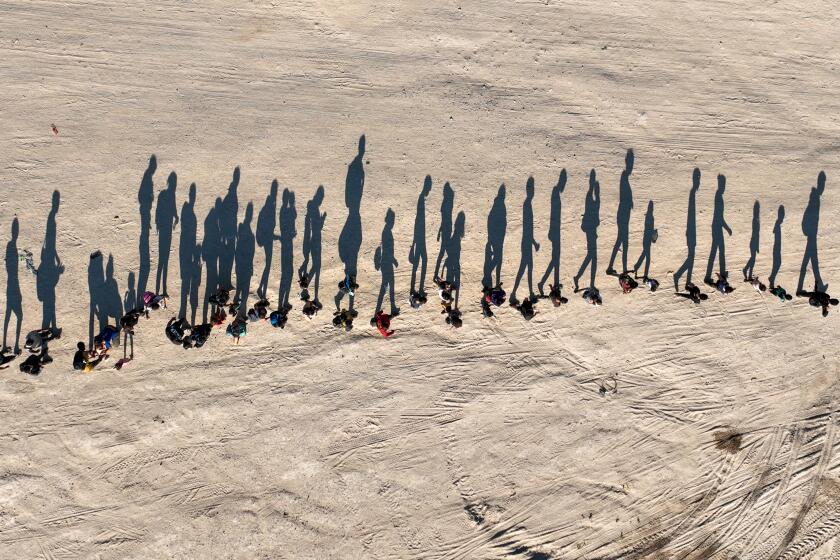Texas asks appeals court to let it keep floating barrier in place on the Rio Grande

NEW ORLEANS — Texas attorneys asked federal appeals court judges Thursday to let the state keep large concrete-anchored buoys in place to block migrants from crossing the Rio Grande — a floating barrier that the Biden administration says was illegally deployed without required federal authorization.
Arguments before three judges with the U.S. 5th Circuit Court of Appeals in New Orleans centered on whether the river area near the border city of Eagle Pass is, or could be, used for commercial navigation.
Lanora Pettit, arguing for the state of Texas, said the shallow, rocky stretch of the Rio Grande is clearly not navigable and unlikely to ever be. She said the Biden administration asserted that it is in order “to enjoin the state from taking action to protect its citizens against violent, criminal activity.”
Michael Gray of the U.S. Justice Department pointed to past ferry traffic in the area, the use of the area by vessels with the U.S. Coast Guard and the International Boundary and Water Commission and the possibility of future projects to make the stretch better suited for commercial traffic as evidence that the barriers violated federal law.
Soldiers and razor-sharp metal at the Mexico-Texas border don’t deter migrants who traveled months to get there, as numbers of those fleeing to the U.S. soar.
The judges hearing the case did not indicate when they would rule. And, although their questions gave little indication which way they were leaning, Judge Dana Douglas seemed to push back against Pettit’s assertion that the barriers don’t constitute a permanent obstruction — which would require federal approval.
“It would take several weeks and heavy equipment and at least $300,000 for you to remove those, is that incorrect?” Douglas asked.
“To entirely remove them, it would take an amount of time, a couple of weeks, yes. However, the evidence in the record is also that they are temporary and designed to be so,” Pettit said.
Texas Gov. Greg Abbott, declaring that the state was under invasion from migrants, had workers deploy the roughly 1,000-foot-long string of large spherical buoys on the river this past summer near Eagle Pass.
Earlier last month, U.S. District Judge David Ezra called the buoy system a threat to safety and relationships between the U.S. and Mexico. His preliminary injunction instructed Texas to move the barrier out of the water and onto the riverbank. But the 5th Circuit delayed implementation of the ruling pending appeal.
Ezra also cast doubt on Texas’ rationale for the barrier, writing that the state produced no “credible evidence that the buoy barrier as installed has significantly curtailed illegal immigration.”
The Biden administration contends that, under the U.S. Rivers and Harbors Act of 1899, federal authorization would be required to put the barrier on a navigable waterway. Administration attorneys also argued that the concrete anchors holding the buoys in place are a serious threat to watercraft.
Judge Carolyn Dineen King, nominated to the court by former President Carter, was also on the panel. Judge Don Willett, nominated by former President Trump, participated remotely and did not ask questions. Douglas, the 5th Circuit’s newest member, was nominated by President Biden.
More to Read
Sign up for Essential California
The most important California stories and recommendations in your inbox every morning.
You may occasionally receive promotional content from the Los Angeles Times.











